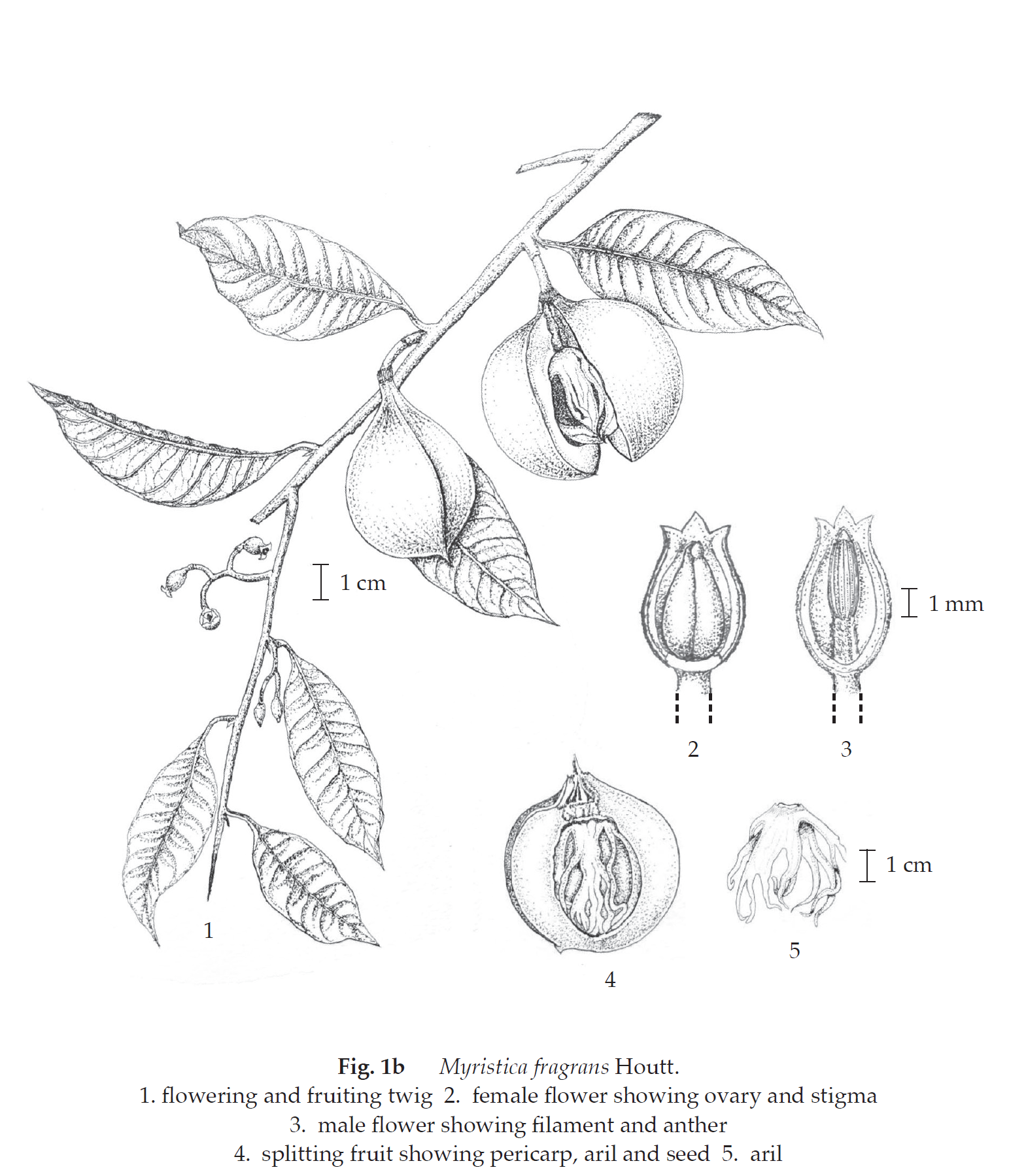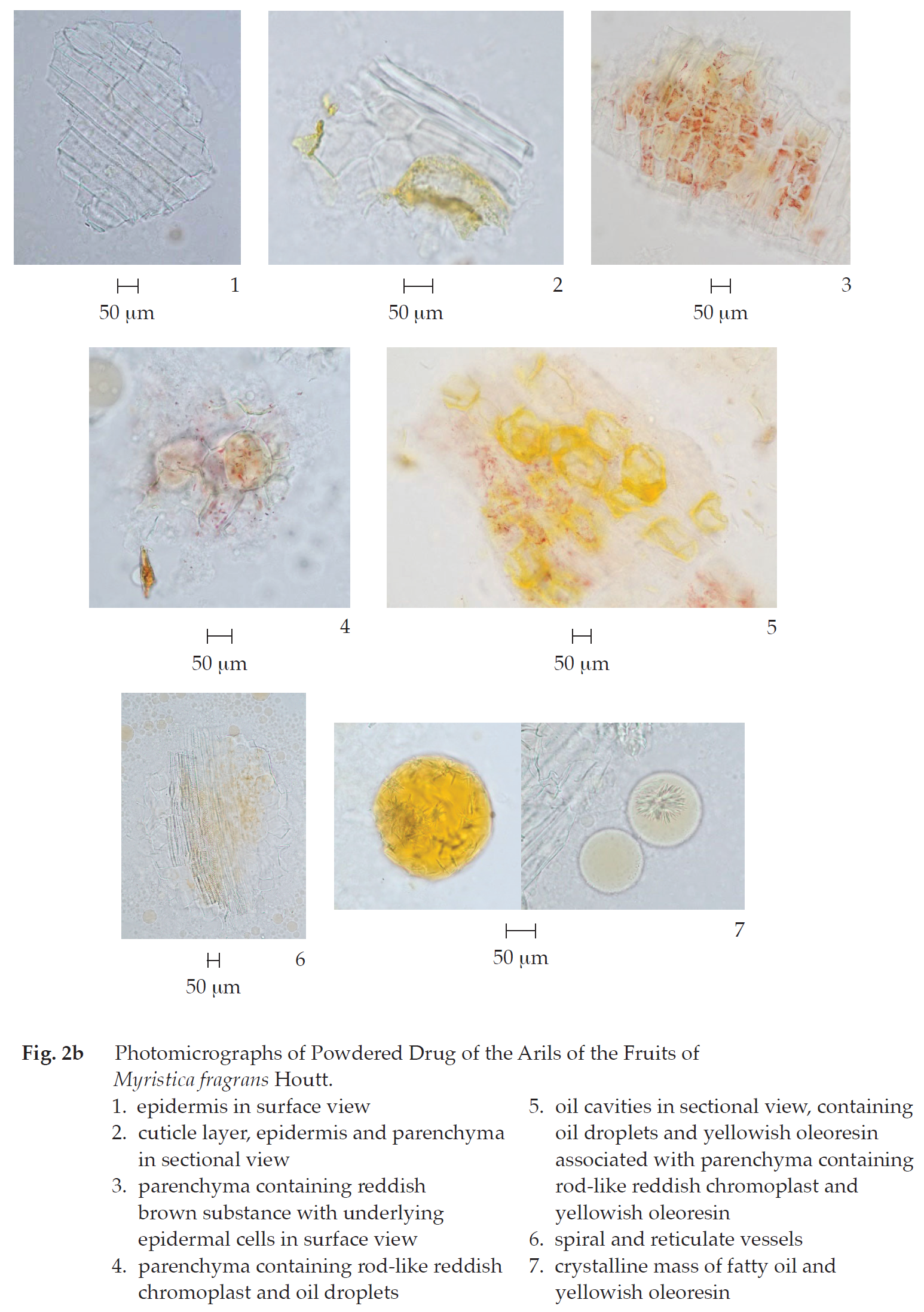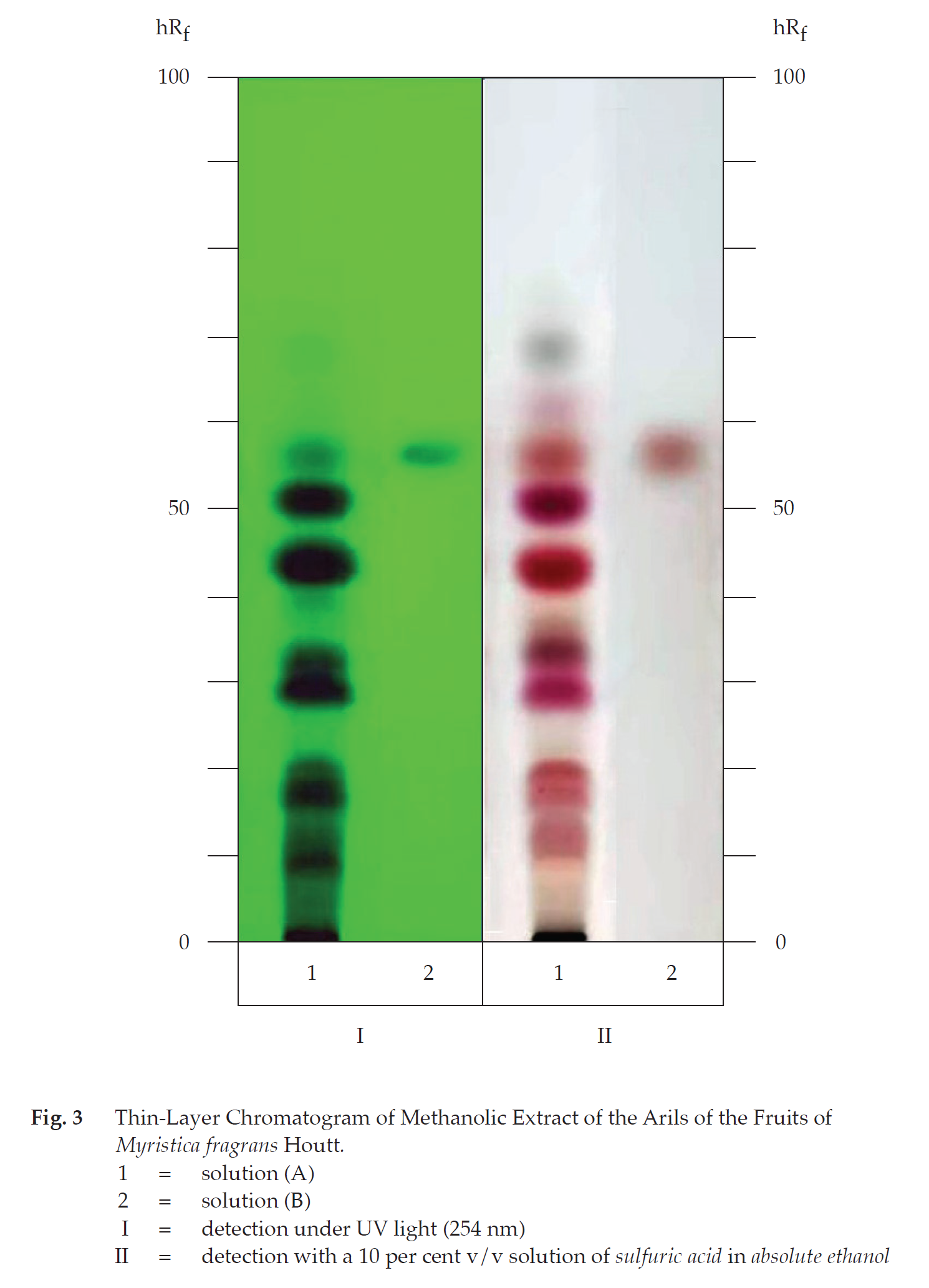ตำรามาตรฐานยาสมุนไพรไทย
Thai Herbal Pharmacopoeia
สำนักยาและวัตถุเสพติด กรมวิทยาศาสตร์การแพทย์ กระทรวงสาธารณสุข
Bureau of Drug and Narcotic, Department of Medical Sciences, Ministry of Public Health(Tinospora crispa (L.) Hook.f. & Thomson)
(Nelumbo nucifera Gaertn.)
(Centella asiatica (L.) Urb.)
(Centella Dry Extract)
(Centella Cream)
(Mesua ferrea L.)
(Piper sarmentosum Roxb.)
(Piper sarmentosum Roxb.)
(Pterocarpus santalinus L. f.)
(Santalum album L.)
(Senna tora (L.) Roxb.)
(Senna alata (L.) Roxb.)
(Senna Alata Tea)
(Piper retrofractum Vahl)
(Myristica fragrans Houtt)
(Andrographis paniculata (Burm. f.) Nees)
(Andrographis Capsules)
(Allium ascalonicum L.)
(Ocimum tenuiflorum L.)
(Curcuma longa L.)
(Turmeric Capsules)
(Turmeric Dry Extract)
(Turmeric Dry Extract Capsules)
(Arcangelisia flava (L.) Merr.)
(Curcuma sp.)
Harrisonia perforata (Blanco) Merr.
(Aristolochia pierrei Lecomte)
(Zingiber officinale Roscoe)
(Ginger Capsules)
(Ginger Tea)
(Cassia fistula L.)
(Nardostachys jatamansi (D. Don) DC.)
(Angelica sinensis (Oliv.) Diels)
Artemisia annua L.
(Ligusticum sinense Oliv. cv. Chuanxiong)
(Neopicrorhiza scrophulariiflora Pennell)
(Atractylodes lancea (Thunb.) DC.)
(Aucklandia lappa Decne)
(Terminalia chebula Retz.)
(Angelica dahurica (Hoffm.) Benth. & Hook. f. ex Franch. & Sav. var. dahurica)
(Kaempferia parviflora Wall. ex Baker)
(Hibiscus sabdariffa L.)
(Roselle Tea)
(Allium sativum L.)
(Zingiber zerumbet (L.) Sm.)
(Wurfbainia testacea (Ridl.) Škorničk.& A. D. Poulsen)
(Cannabis sativa L.)
(Myristica fragrans Houtt)
(Dracaena cochinchinensis (Lour.) S. C. Chen)
(Ficus racemosa L.)
(Hyptis suaveolens (L.) Poit.)
Clerodendrum indicum (L.) Kuntze
(Phyllanthus emblica L.)
(Citrus hystrix DC.)
(Citrus hystrix DC.)
(Areca catechu L.)
(Momordica charantia L.)
Moringa oleifera Lam.
(Aegle marmelos (L.) Corrêa)
(Solanum trilobatum L.)
(Morus alba L.)
Gynostemma pentaphyllum(Thunb.)
Makino
(Clinacanthus nutans (Burm. f.) Lindau)
(Cissus quadrangularis L.)
(Mimusops elengi L.)
(Zingiber montanum (J. König) Link. ex A. Dietr.)
(Piper betle L.)
(Capsicum annuum L.)
(Capsicum Oleoresin)
(Capsicum Gel)
(Piper nigrum L.)
(Piper nigrum L.)
(Eurycoma longifolia Jack)
(Thunbergia laurifolia Lindl.)
(Piper wallichii (Miq.) Hand.-Mazz.)
Senna garrettiana (Craib) H. S. Irwin & Barneby
(Terminalia bellirica (Gaertn.) Roxb.)
(Terminalia chebula Retz.)
(Caesalpinia bonduc (L.) H. Roxb.)
(Tarlmounia elliptica (DC.) H. Rob., S. C. Keeley, Skvaria & R. Chan)
(Hog Creeper Vine Dry Extract Capsiles)
(Hog Creeper Vine Dry Extract)
(Brachypterum scandens (Roxb.) Miq.)
(Lepidium sativum L.)
(Nigella sativa L.)
(Cuminum cyminum L.)
(Foeniculum vulgare Mill.)
(Plantago ovata Forssk.)
(Pimpinella anisum L.)
(Carum carvi L.)
(Anethum graveolens L.)
(Trachyspermum ammi (L.) Sprague)
Albizia procera (Roxb.) Benth.
(Acorus calamus L.)
(Tiliacora triandra (Colebr.) Diels)
Cyanthillium cinereum (L.) H. Rob.
(Orthosiphon aristatus (Blume) Miq.)
Murdannia loriformis (Hassk.) R. S. Rao & Kammathy
(Capparis micracantha DC.)
(Chrysopogon zizanioides (L.) Roberty)
(Cyperus rotundus L.)
(Cannabis sativa L.)
(Syzygium aromaticum (L.) Merr. & L. M. Perry)
(Boesenbergia rotunda (L.) Mansf.)
(Acanthus ebracteatus Vahl)
(Acanthus ilicifolius L.)
(Kaempferia galanga L.)
(Curcuma comosa Roxb.)
Betula alnoides Buch.-Ham. ex D. Don
Cannabis sativa L.
Carthamus tinctorius L
Mitragyna speciosa (Korth.) Havil
Mallotus repandus (Rottler) Müll. Arg
Azadirachta indica A. Juss. var. siamensis Valeton
Azadirachta indica A. Juss. var. siamensis Valeton
Punica granatum L.
Rhinacanthus nasutus (L.) Kurz
Baliospermum solanifolium (Burm.) Suresh
Curcuma aeruginosa Roxb
Boesenbergia kingii Mood & L. M. Prince
Senegalia rugata (Lam.) Britton & Rose
Acacia concinna (Willd.) DC.
Senegalia rugata (Lam.) Britton & Rose
Acacia concinna (Willd.) DC.
Senna alexandriana Mill. var. alexandriana
Cassia acutifolia Delile, Cassia angustifolia Vahl
Butea superba Roxb. ex Willd.
[Plaso superba (Roxb. ex Willd.) Kuntze, Rudolphia superba (Roxb. ex Willd.) Poir.
Pueraria candollei Graham
ex Benth. var. mirifica (Airy Shaw & Suvat.) Niyomdham
Streblus asper Lour.
Suregada multiflora (A. Juss.) Baill. (Gelonium
multiflorum A. Juss.
Mace is the dried aril of the ripe fruit of Myristica fragrans Houtt. [M. aromatica Sw., M. moschata Thunb., M. officinalis L. f., Aruana silvestris Burm. f., Palala fragrans (Houtt.) Kuntze] (Family Myristicaceae), Herbarium Specimen Number: DMSC 5284, Crude Drug Number: DMSc 1190.
Constituents Mace contains volatile oil, of which elemicin, isoelemicin, myristicin, sabinene, safrole, and 4-terpineol are its major components. It also contains fixed oil, etc.
Description of the plant (Figs. 1a, 1b) Tree up to 18 m tall; dioecious, sometimes monoecious; sap watery, reddish; branches slender towards apex, glabrescent. Leaves simple, alternate, elliptic, elliptic-lanceolate or oblong, rarely ovate, 6 to 15 cm long, 3.5 to 6.5 cm wide, apex acute to acuminate, base attenuate or broadly cuneate, margin entire, chartaceous or thinly coriaceous, upper surface glabrous, lower surface glabrescent, midvein slender, raised on upper surface, lateral veins 5 to 12 pairs, flat or sunken on upper surface; petiole slender, 0.5 to 1.2 cm long, 0.7 to 1.5 mm in diameter; leaf bud shortly hairy. Inflorescence panicle-like, axillary or supra-axillary; male inflorescence slender, 2.5 to 5 cm long, 4 to 8 flowered, sometimes reduced to 1 to 3; peduncle slender, 0.5 to 2 cm long, with 1 or 2 remotely scars; female inflorescence 1(–3)-flowered. Flower urceolate, pale yellow, fragrant, perianth 3-lobed; male flower with pedicel 1 to 1.5 cm long; bracteole caducous; bud oblong, rarely ellipsoid, 7 to 8 mm long, 4 to 5 mm wide, not angular, splitting about 1.5 mm from apex, outer surface minutely tomentose, stamens united into a column, about 5 mm long, anthers 9 to 12, adnated to column; female flower stouter than male; pedicel 0.8 to 1.2 cm long; bracteole inserted on base of perianth, leaving ring-like scar after abscission; ovary ellipsoid, rusty pubescent, style more or less absent, stigmas 2, minute. Fruit solitary, pendulous, subglobose or broadly pear-shaped, 6 to 9 cm in diameter when fresh, 4 to 6 cm long when dried, longitudinally ridged, orange or yellow when ripe, splitting into 2 valves, glabrescent. Seed 1, ovoid-globose to ellipsoid, 2 to 4 cm long, 1.5 to 2.5 cm wide, brownish to blackish, shiny; aril red, irregularly deeply lacerate; cotyledon curled, connate at base.
Description Odour, strongly aromatic, characteristic; taste, prickling and slightly spicy.
Macroscopical (Figs. 1a, 1b) Whole aril occurs as fused reticulate stripes attached to the base, varying in shape and size, yellowish brown to brownish. Broken pieces, flattened, ribbon-like, branched, 2 to 4 cm long, yellowish brown to brownish.
Microscopical (Figs. 2a, 2b, 2c) Transverse section of the aril shows upper and lower epidermises, cortex and vascular tissue. Upper and lower epidermises: a layer of small thin-walled cells covered with prominent cuticle layer. Cortex: 1 to 3 layers of polygonal parenchyma cells, containing reddish brown substance, and adjacent to both epidermal layers; larger polygonal parenchyma, containing rod-like reddish chromoplast, oil droplets and/or yellowish oleoresin; large oil cavity, containing oil droplets and yellowish oleoresin. Vascular tissue: phloem and xylem, lined in the centre of the cortex.





Mace in powder possesses the diagnostic microscopical characters of the unground drug. Parenchyma containing reddish brown substance, rod-like reddish chromoplast, oil droplets, and large oil cavity are characteristic. However, the crystalline mass of fatty oil, formed by heating the powdered drug with chloral hydrate TS can be observed.
Additional information Large quantities of mace can induce psychogenic effect.
Packaging and storage Mace shall be kept in well-closed containers, preferably of metal or glass, protected from light and stored in a cool and dry place.
Identification Carry out the test as described in the “Thin-Layer Chromatography” (Appendix 3.1), using silica gel 60 F254 as the coating substance and a mixture of 70 volumes of n-hexane and 30 volumes of ethyl acetate as the mobile phase. Apply separately to the plate as bands of 8 mm, 10 μL of solution (A) and 25 μL of solution (B). Prepare solution (A) by sonicating 1 g of the sample, in coarse powder, with 10 mL of methanol for 20 minutes and filtering. Evaporate the filtrate to dryness under reduced pressure at 50°. Dissolve the residue in 1 mL of methanol. For solution (B), dissolve 1 mg of myristicin with 1 mL of methanol. After removal of the plate, allow it to dry in air and examine the plate under ultraviolet light (254 nm), marking the quenching bands. The chromatogram obtained from solution (A) shows a quenching band (hRf value 56 to 58), corresponding to the myristicin band obtained from solution (B). Subsequently spray the plate with a 10 per cent v/v solution of sulfuric acid in absolute ethanol and heat at 105° for 10 minutes; the band corresponding to myristicin is reddish brown. Several other bands of different colours are observed (Table 1); see also Fig. 3.
Table 1 hRf Values of Components in Methanolic Extract of the Arils of the Fruits of Myristica fragrans Houtt.
| Band | hRf Value | Detection | |
| UV 254 | 10 Per Cent V/V Solution of Sulfuric Acid in Absolute Ethanol |
||
| 1 | 8-10 | quenching | - |
| 2 | 10-12 | weak quenching | brownish red |
| 3 | 16-18 | quenching | brownish red |
| 4 | 20-21 | quenching | brownish red |
| 5 | 28-30 | quenching | brownish red |
| 6 | 31-34 | quenching | brown |
| 7 | 42-45 | quenching | brownish red |
| 8 | 50-52 | quenching | brownish red |
| 9* | 56-58 | quenching | reddish brown |
| 10 | 61-64 | - | pale purple |
| 11 | 68-70 | - | greyish blue |
*myristicin
Water Not more than 8.0 per cent v/w (Azeotropic Distillation Method, Appendix 4.12).
Foreign matter Not more than 2.0 per cent w/w (Appendix 7.2).
Total ash Not more than 5.0 per cent w/w (Appendix 7.7).
Ethanol-soluble extractive Not less than 26.0 per cent w/w (Appendix 7.12).
Water-soluble extractive Not less than 7.0 per cent w/w (Appendix 7.12).
Volatile oil Not less than 11.0 per cent v/w, calculated on the anhydrous basis (Appendix 7.3H). Use 10 g, in coarse powder, freshly prepared and accurately weighed. Use 200 mL of water as the distillation liquid and a 500-mL round-bottomed flask. Distil at a rate of 2 to 3 mL per minute for 3 hours. Use 2.0 mL of xylene in the graduated tube.
